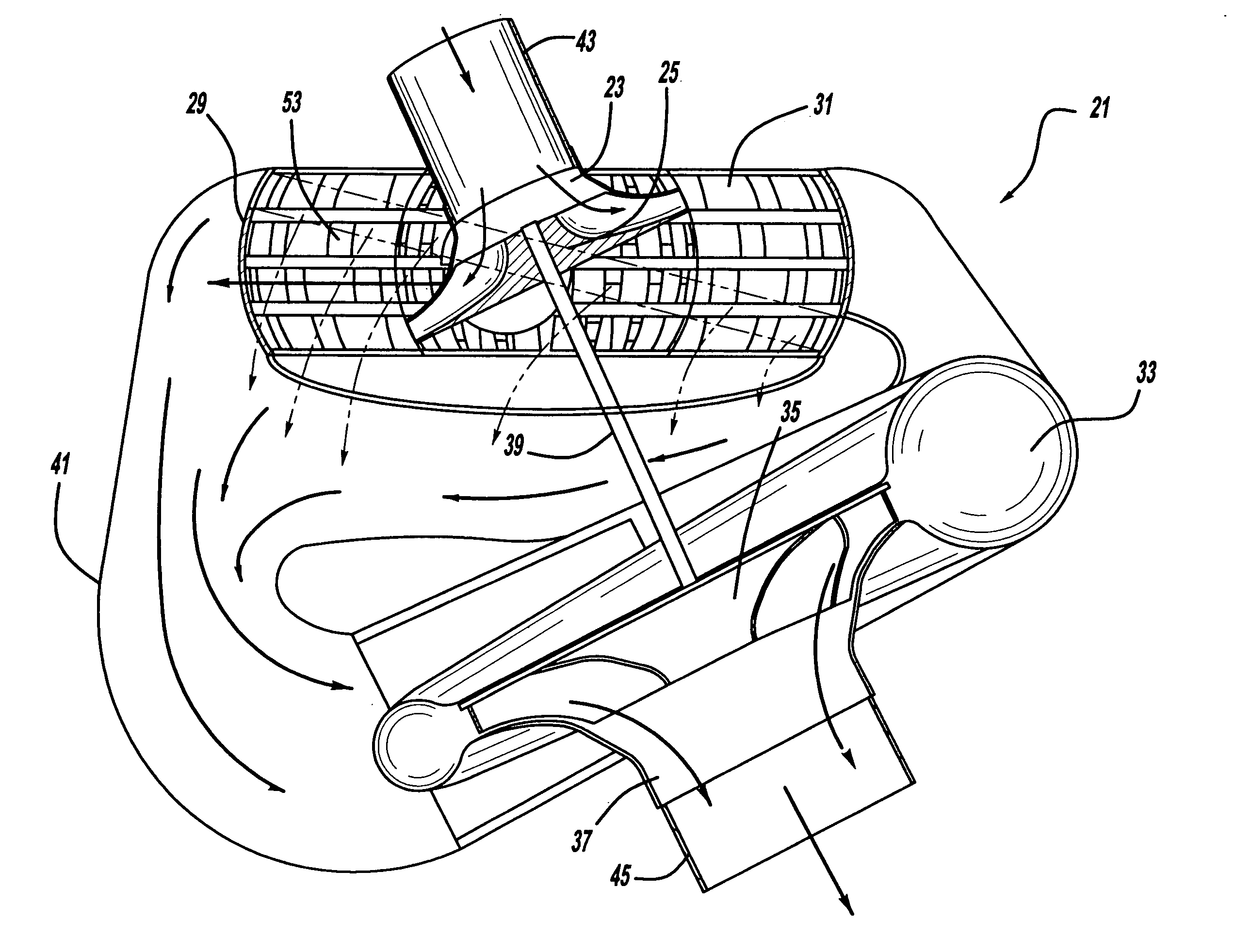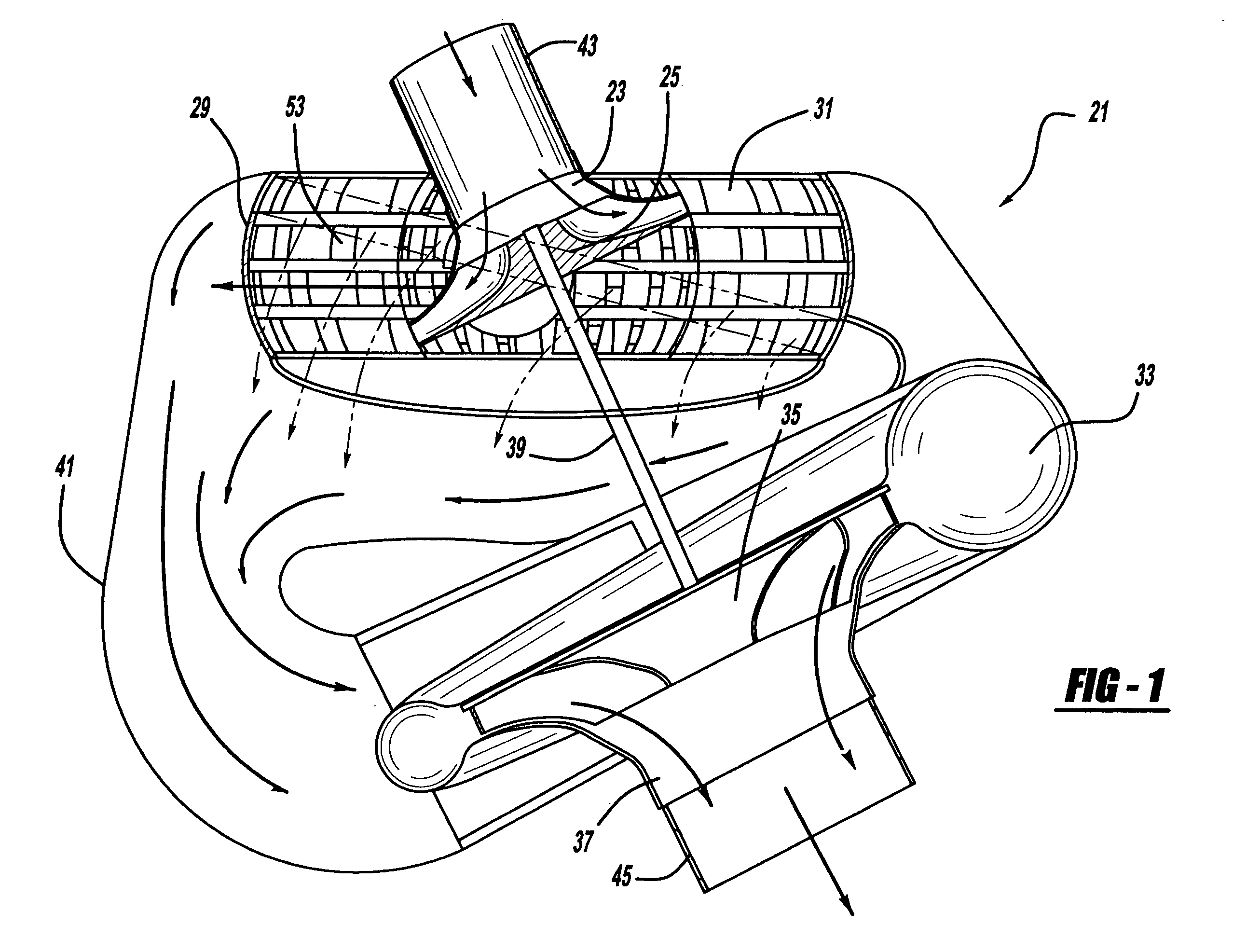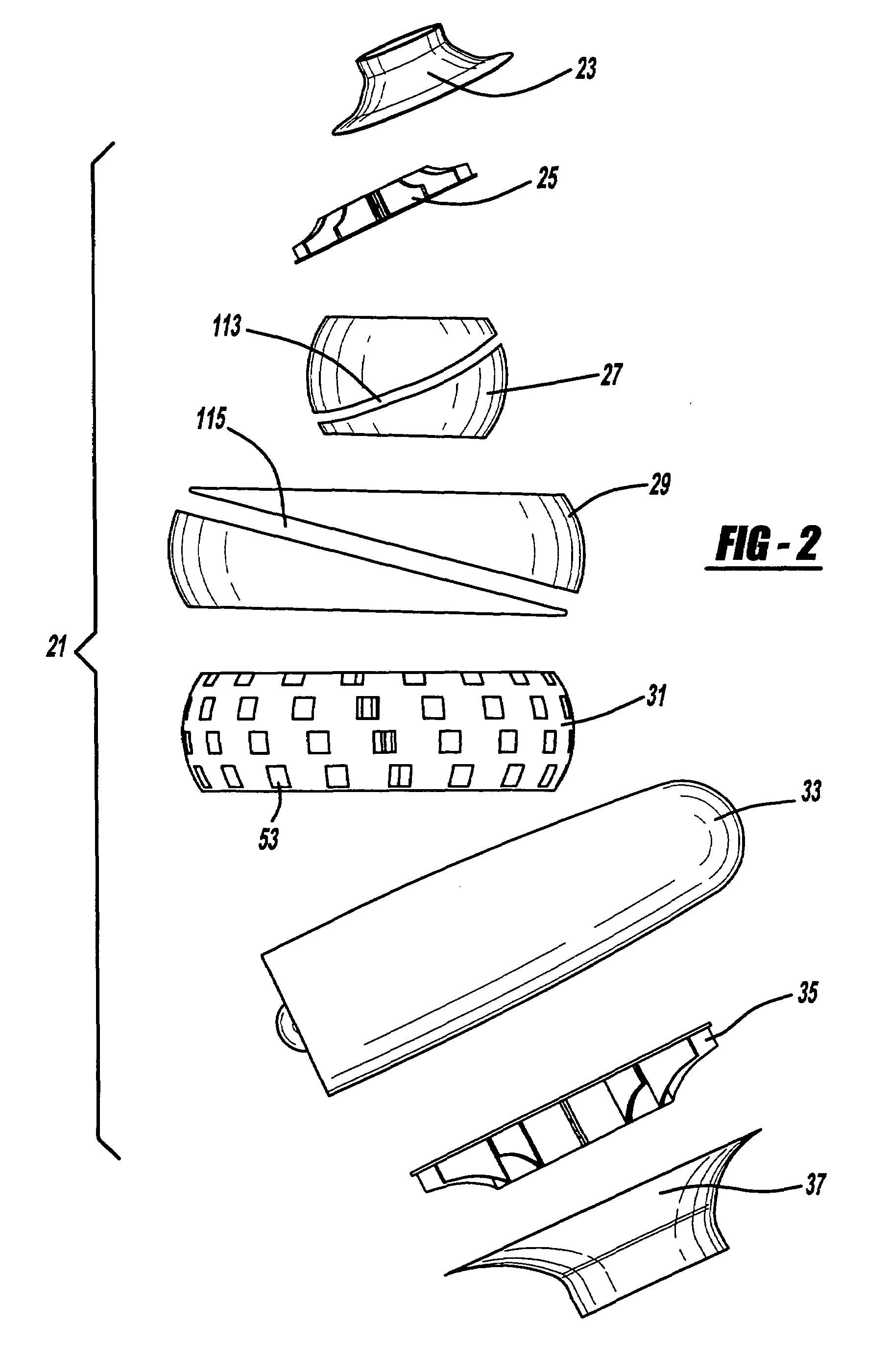Wave rotor apparatus
a rotor and wave technology, applied in the direction of mechanical equipment, machines/engines, wave producing pumps, etc., can solve the problems of reducing the sensitivity of axial wave rotors to engine speed changes, and achieves improved efficiency, small frontal area, and high power density.
- Summary
- Abstract
- Description
- Claims
- Application Information
AI Technical Summary
Benefits of technology
Problems solved by technology
Method used
Image
Examples
Embodiment Construction
[0032]A wave rotor is a machine in which a fluid is pressurized by generally unsteady shock or compression waves and expanded by expansion waves. As a general principle for wave rotors used in a gas turbine engines, a wave rotor provides a pressure gain additional to that provided by a compressor. It also enables higher combustion end temperatures without raising a turbine inlet temperature since a portion of the energy of the burning gas exiting a combustion chamber is used in the shock compression to increase the pressure and temperature of the fresh air before it enters the combustion chamber. Accordingly, the pre-expanded burned gas is scavenged toward a turbine and channels of the wave rotor are reconnected to the compressor outlet, allowing fresh, pre-compressed air to flow into the wave rotor channels. Thus, wave rotors utilize a high-pressure fluid to transfer its energy directly to a low-pressure fluid when two fluids with different thermodynamic properties are brought into...
PUM
 Login to View More
Login to View More Abstract
Description
Claims
Application Information
 Login to View More
Login to View More - R&D
- Intellectual Property
- Life Sciences
- Materials
- Tech Scout
- Unparalleled Data Quality
- Higher Quality Content
- 60% Fewer Hallucinations
Browse by: Latest US Patents, China's latest patents, Technical Efficacy Thesaurus, Application Domain, Technology Topic, Popular Technical Reports.
© 2025 PatSnap. All rights reserved.Legal|Privacy policy|Modern Slavery Act Transparency Statement|Sitemap|About US| Contact US: help@patsnap.com



